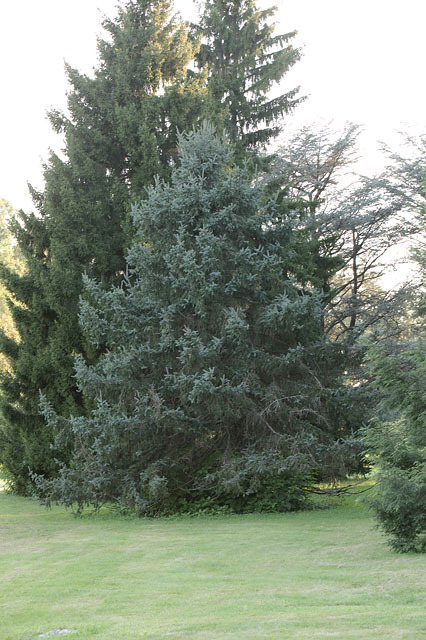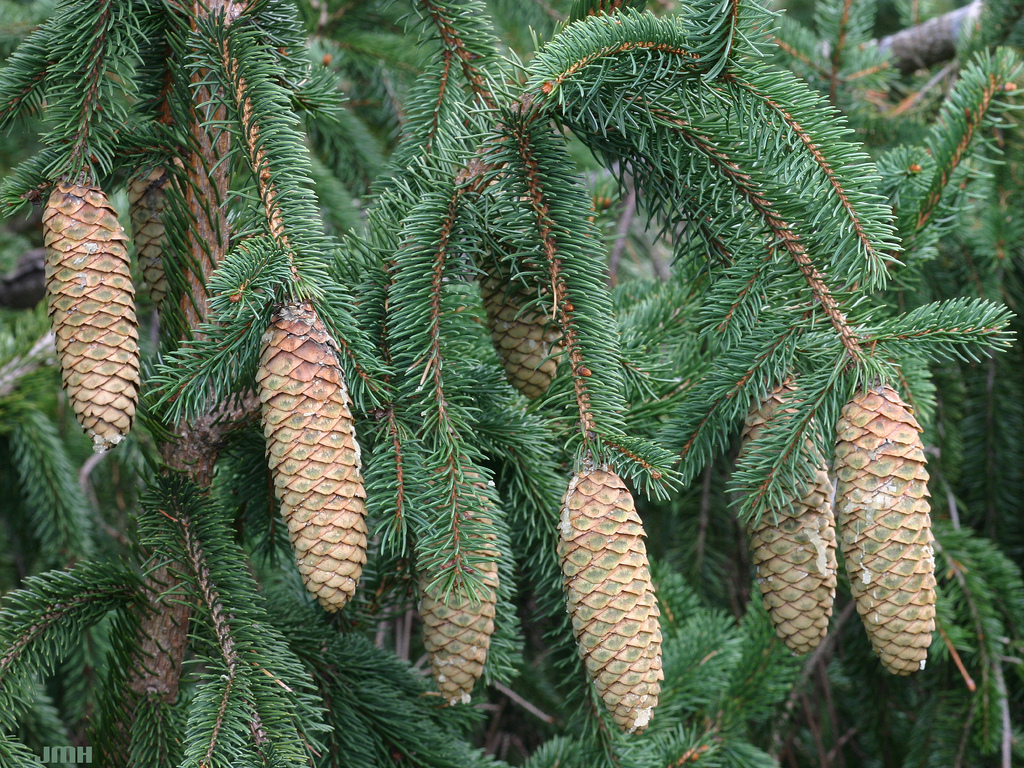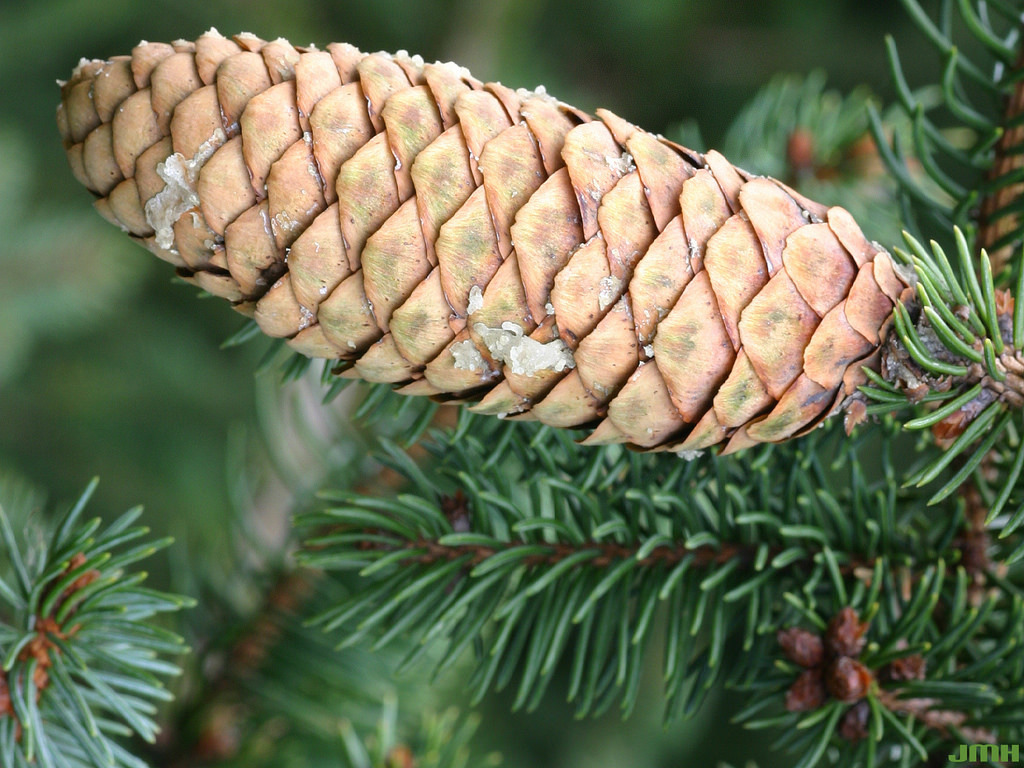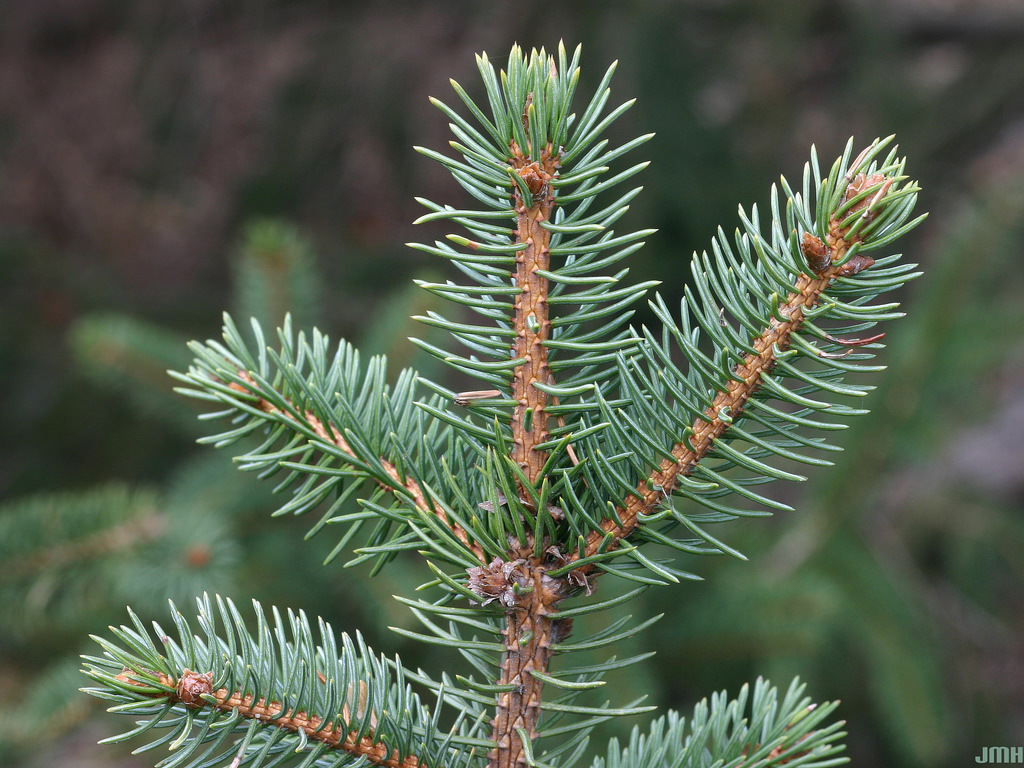Picea retroflexa, as described in 1906 by Maxwell Tylden Masters (1833-1907), in Journal of the Linnean Society, Botany 37th edition, is commonly known as green dragon spruce, as well as é³žçš®äº‘æ‰ (LÃn pà yún shÄn / scaly spruce) in the Chinese language. Masters (1906) states that pulvini on the shoots are bent back along the shoot axis (patenti-reflexi); this may be the origin of the epithet retroflexa. However his description also states "very remarkable in its sharply decurved cone-scales", so the epithet may also allude to that character.
Description. Green dragon spruce is an evergreen coniferous species of tree that grows to mature heights of 150 feet (45 m) tall; with a trunk up to 60 inches (150 cm) in diameter, measured at breast height; with a single straight, round trunk and a conical to columnar crown of numerous short, straight, horizontal primary branches.
- Bark is rough and scaly, comprised of small, flaky plates.
- Twigs are short and thick, light- or orange-brown in color, strongly ridged and grooved with conspicuous pulvini that measure 0.04 to 0.08 inch (1 - 2 mm) long and 0.04 to 0.06 inch (1 - 1.5 mm) wide.
- Foliar buds are broadly conical and resinous, measuring 0.2 to 0.4 inch (5 - 10 mm) long and wide, closely surrounded by curved leaves. Foliar buds are composed of keeled, appressed, orange-brown bud scales that persist for several years at the base of the shoot.
- Leaves (needles) are light- to glaucous-green in color, radially spreading, and curved forward. Individual needles measure 0.48 to 0.72 inch (12 - 18 mm) long and 0.06 to 0.08 inch (1.5 - 2 mm) wide, with a linear outline, a quadrangular cross-section, prominent ribs, and sharply pointed apices, with stomata in paired bands of 2 to 3 lines on upper surfaces and 4 to 6 lines on lower surfaces.
- Pollen cones are borne axillary. They measure 1.2 to 2 inches (3 - 5 cm) long, ripening reddish yellow.
- Seed cones are borne terminal on branchlets, initially erect becoming pendulous. They are sessile, with oval-oblong to cylindric-conical/obtuse shape, measuring 3.2 to 5.2 inches (8 - 13 cm) long and 0.8 to 1.6 inches (2 - 4 cm) wide when fully open. Cone color is purple-red when immature, maturing to purple-brown.
- Seed scales have and obovate shape, measuring 0.6 to 0.8 inch (15 - 20 mm) by 0.48 to 0.6 inch (12 - 15 mm) at mid-cone, lower surfaces are striated and shiny, outer margins are slightly erose or denticulate, and straight to reflexed when open.
- Bracts measure 0.2 to 0.24 inch (5 - 6 mm) long, included.
- Seeds have ovoid-oblong shape, measuring 0.12 to 0.16 inch (3 - 4 mm) long, colored dark brown, with a 0.4 to 0.6 inch (10 - 15 mm) long and 0.2 to 0.28 (5 - 7 mm) wide pale-brown obovate-shaped wing.
Distribution. This species is native to China - western Sichuan, and southeastern Xizang provinces, where it is found in the subalpine zone at elevations of 6,600 to 13,300 feet (3,000 - 4,000 m) above sea level, occasionally to 15,500 (4,700 m), mostly on northern aspects with acid soils. The climate there is described as continental: relatively dry. Common associates at lower elevations include
P. likiangensis var. rubescens,
P. asperata var. aurantiaca,
Abies chensiensis,
Tsuga chinensis, and
Betula albo-sinensis; at higher elevations it commonly grows with
Abies squamata.
Hardy to USDA Zone 7, cold hardiness limit between 0º to 10ºF (-17.7° and -12.2°C).




